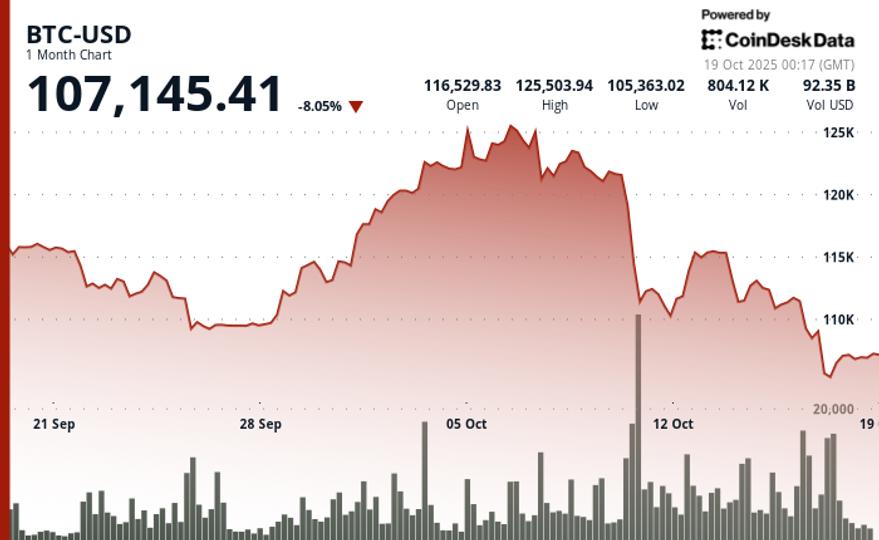October’s wobble hasn’t broken the cycle, claims Alex Thorn, Galaxy Digital’s head of research.
The note was first sent to subscribers of Galaxy Research’s Weekly Research Brief and later reproduced on X.
Thorn says the Oct. 10 selloff began with high leverage hitting thin order books, then worsened as automatic deleveraging on the exchange limited some market-maker shorts and diluted liquidity at the worst time. He cites about $19 billion in liquidations as bitcoin fell from a record high on Oct. 6 near $126,300 to an intraday low of about $107,000, with ether falling from about $4,800 to about $3,500 before markets stabilized into the weekend.
Risk appetite fell again as macro shocks re-emerged. Thorn points to softness in chip stocks, a hawkish turn by a Federal Reserve governor, renewed regional banking concerns and geopolitical noise. Classic risk-off markers amplified the tone, he notes, with gold and silver setting new records and the 10-year Treasury yield falling back below 4%.
He also marks a crypto-specific feature: Financial companies with digital assets have cooled. He says that with share prices down across this cohort, there are less price-insensitive purchases to implement in crypto, adding to short-term fragility even after the initial washout.
In the medium term, however, Thorn remains constructive, highlighting three forces that he believes can strengthen the next leg higher.
First is AI investment. He portrays the current wave as a real-economy investment cycle led by cash-rich incumbents – hyperscalers, chip makers and data center operators – bolstered by significant US political support, rather than a repeat of a purely speculative dot-com bubble. Corporate budgets and government positions, he argues, point to a long runway.
Second are stablecoins. Thorn points to dollar-linked tokens continuing to gain traction as payment rails, broadening participation, deepening liquidity and anchoring more activity on public chains. He believes these plumbing effects can support the ecosystem even as price action declines.
Third is tokenization. According to Thorn, moving real-world assets and parts of traditional market infrastructure on-chain is moving from pilots to deployment, creating new demand for block space and for core assets that secure, route and settle this activity. Thorn says the transition benefits platforms tied to that flow.
Against that backdrop, he remains bullish on bitcoin’s “digital gold” role amid lingering doubts about fiscal and monetary prudence. He also sees a favorable setup for majors like ETH and SOL tied to stablecoin usage and tokenization, although short-term rallies risk stalling below previous highs.
The near-term message is caution – respect thinner liquidity, post-crash psychology and a “wall of worry” sentiment. The medium-term message is resilience: three tailwinds are in place, he says, to keep the trend pointing up once the markets have finished digesting the shock.



